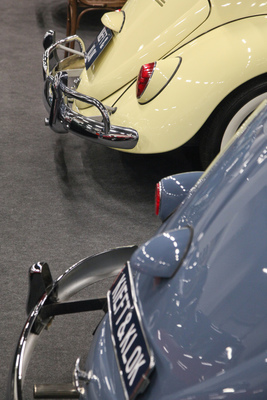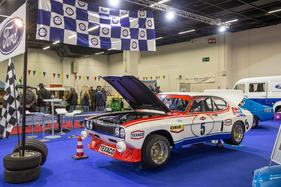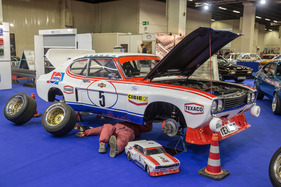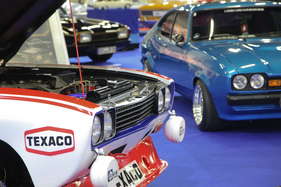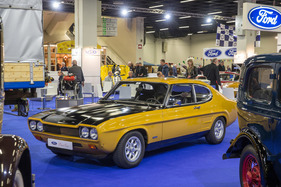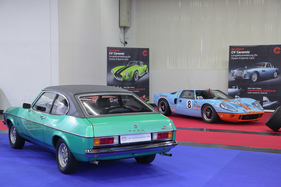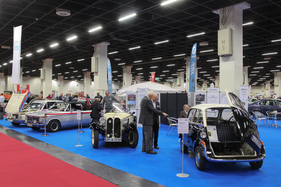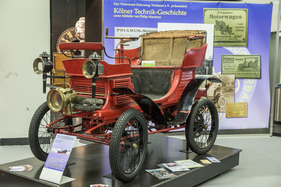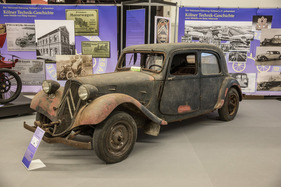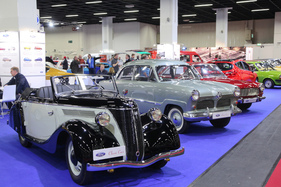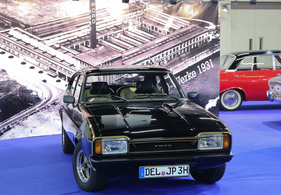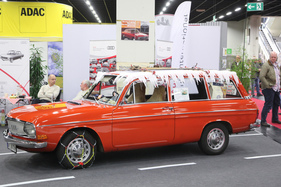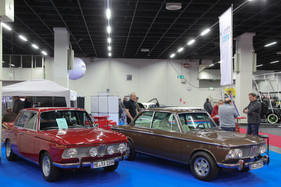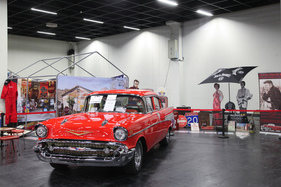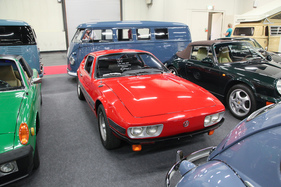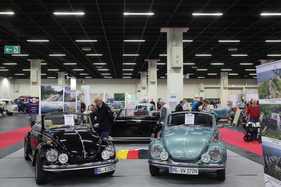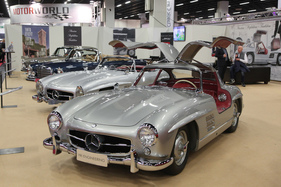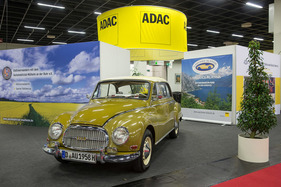It was a bit exciting to see what awaited us at the new trade fair in Cologne. Of course, the Retro Classics organization has enough experience to establish new trade fairs, as was already proven with the first edition in Nuremberg almost a year ago. But what would it be like in Cologne?
The first impression as soon as you entered the halls was definitely positive.
Airy, fragrant
The modern hall infrastructure of the Cologne trade fair allows for an airy and attractive exhibition, although it could do with a little more light in some places. Thanks to wide aisles and generously proportioned stands, there was hardly any crowding, even if some dealers could not refrain from parking their vehicles practically centimeters apart.
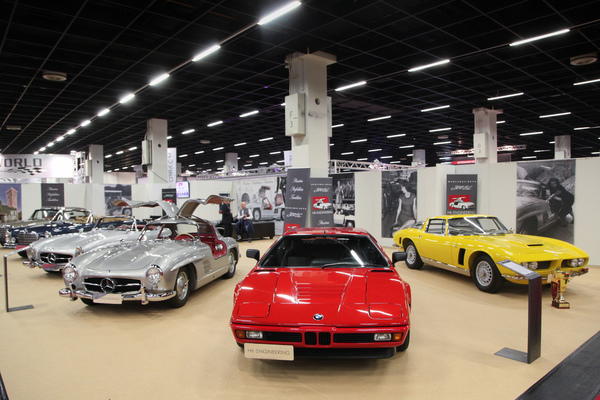
Walking through the halls was a pleasure and this was also reflected in the mood of the visitors, most of whom came from the federal state of North Rhine-Westphalia. With a population of 17.9 million, the area certainly has a large enough population for a regional classic car show, which is further emphasized by the many collectors and classic car owners who live in the area.
The matter of the Sunday of the dead
With the provision of 60,000 square meters and the commitment of around 480 exhibitors, K. U. Herrmann and his team had completed their preparatory work with flying colors, but unexpected resistance arose at the last moment. The last day of the fair unfortunately fell on the "Sunday of the Dead". On this quiet (Protestant) holiday, which is also known as Eternity Sunday, trading and loud celebrations are prohibited in principle. There was a threat of the early closure of the fair on Saturday. In the end, however, a "Cologne-style" compromise was found that allowed the fair to open on Sunday, but prohibited sales and consultation on the third day.
It was probably a compromise, but actually an impossible solution from the point of view of both exhibitors and visitors. With a bit of moderation, however, the Sunday went off with a surprisingly large rush of visitors, and the cow was off the ice, so to speak.
Home-grown from Cologne
The city of Cologne is not internationally regarded as a stronghold of the automotive industry, even though the first petrol engine was built in Cologne's Servasgasse around 1865.

The company August Horch & Cie was founded in Cologne, and Kölner Motorenwagenfabrik GmbH, which later became Priamus Automobilwerke, built its own automobiles over 100 years ago, including a Type A Vis-à-Vis, which was exhibited at the Cologne trade fair.
It stood next to a Citroën Traction Avant, 20,251 of which were produced in Cologne between 1927 and 1935.
Just like Citroën, other international car manufacturers also brought work to the city of Cologne, the best known of which was certainly Ford.
Ford, of course
The foundation stone for Ford's production activities in Cologne was laid in 1930, after the Americans had previously manufactured in Berlin.
The first Ford made in Cologne rolled off the production line in 1932, and in 1935 the Ford Eifel was presented, one of which was on display at the large Ford Club stand, as was the Ford Model A, which was also built in Germany.
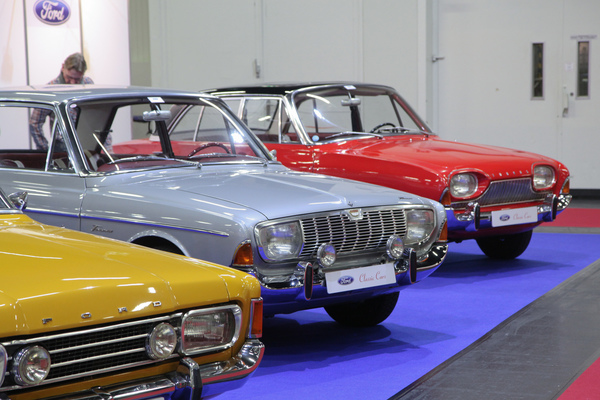
However, things really got going with the various Taunus models and later with cars such as the Ford Escort and the Granada.
The extremely spacious stand at Retro Classics offered an interesting insight into the product ranges from the fifties to the seventies. One of the main attractions for many was certainly the Ford Capri, of which a large number of variants were on display.
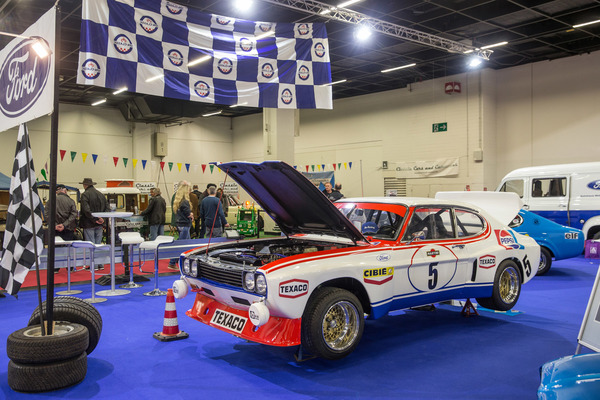
However, some visitors might have wished for clearer labeling and explanations of the vehicles on display.
Beautiful and appealing club stands
Of course, the Ford clubs were not the only ones who had really gone the extra mile. A large number of makes and eras were also represented, especially in Hall 4.1, and most of them were not satisfied with just setting up a few cars.
Elaborate performances were choreographed, such as the winter delights at Audi or the racing atmosphere at Abarth or Francis Lombardi.
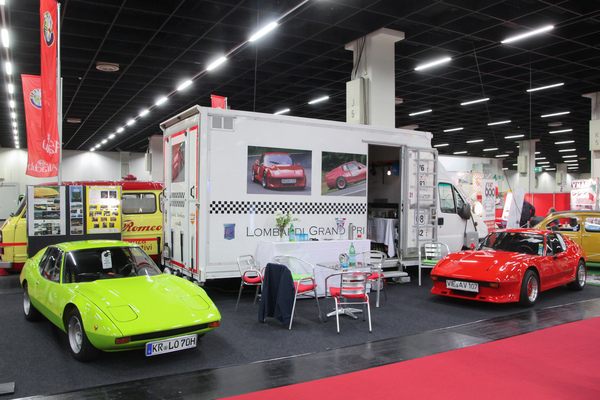
The Fiat 600 Friends of Germany were represented, as were the BMW Club Mobile Classic and the Auto Union Veteran Club.
The Mercedes-Benz Veterans Club was not to be missed, and for motorcycle enthusiasts, the MV Augusta Club had put together a truly extensive special show from the brand's rich oeuvre.
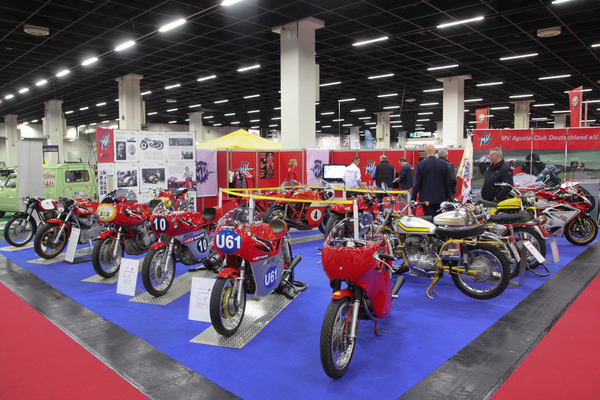
And true to the motto "Elvis Presley will never die", the fan club of the same name, whose honorary members include Peter Kraus, displayed a magnificent Cadillac complete with a variety of Elvis props.
And that's only a third of what there was to see.
Versatile trade
Of course, a classic car show is also a trading venue and this was occupied by a large number of classic car dealers on the one hand, but also by an auction (ClassicBid) and an online marketplace platform (Classic Trader) on the other.
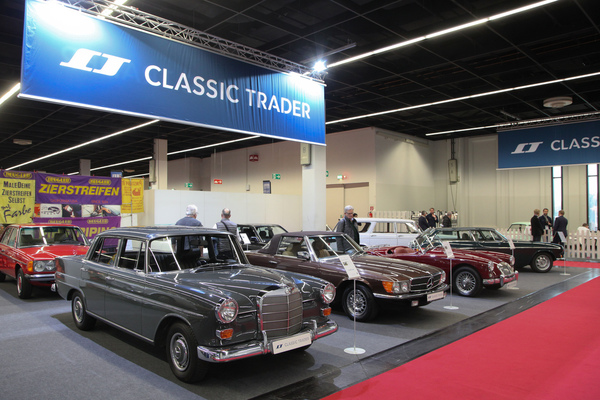
The latter, together with the dealers, many of whom came from the region, ensured a thoroughly varied range of old cars, which extended far beyond the flagship products of car manufacturers Mercedes-Benz and Porsche. And the prices? Certainly at a confident level.
If you looked closely, you could find a rare VW SP2 or a Goliath Hansa 1100, but also a surprisingly large selection of BMW Z8s.
There was also a Beetle Cabriolet and a Ford Escort RS 2000.
Only the range of pre-war vehicles was rather thin, while there was of course no shortage of 300 SL Gullwings and Roadsters, 190 SLs or Porsche 356/911s in all price ranges.
The fact that there was also a BMW M1 and an Iso Grifo in red and yellow on the HK Engineering stand was noted with relish.
Extensive range of information
Meanwhile, many automobile-related service providers were on hand to provide visitors with information. The ADAC presented the second revised version of the "Oldtimer Bordbuch", a handy A5 booklet that fits in most glove compartments and contains lots of information that is useful to have to hand in everyday classic car life.
The AvD placed an Opel GT next to a Peugeot 304, thus historically reenacting the new takeover of Opel by Peugeot, so to speak. After all, the bodywork of the Opel GT had already been created in France.
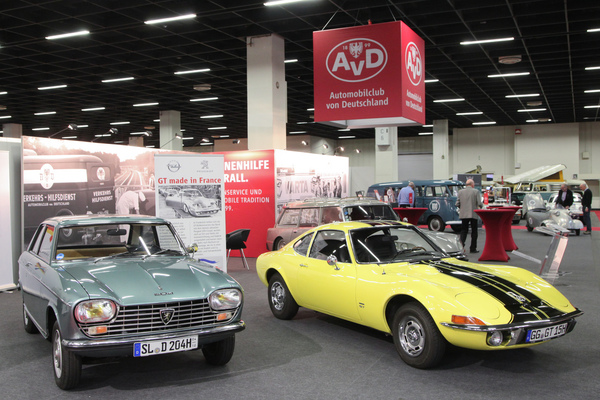
Restorers showed examples of their craft, event organizers advertised their events, media companies presented themselves with beautiful cars. Even where you couldn't buy anything, there was a lot to learn.
Lots of interest, good business
Organizer K. U. Herrmann is delighted with his new Retro-Classics baby, the feedback was very positive, the visitors were also extremely satisfied, ninety percent would recommend the trade fair to others. "There is an incredible amount to see" or "I should have planned more time" were sentences that were frequently heard in the aisles of the halls.
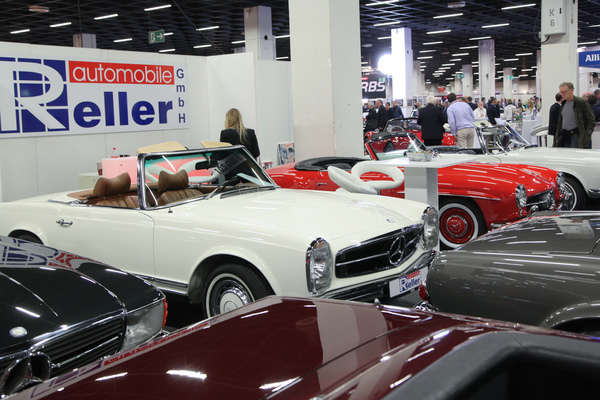
Dealer Ralf Reller from Paderborn-based car dealership Reller Automobile was able to report a very good sales result: "We had sold seven vehicles by Saturday evening!" And Kai Nieklauson, the owner of Chrome Cars, praised the visitors: "Super audience". At least some parts and literature suppliers in the basement of Hall 4 on Friday were a little less optimistic, but they were also hoping for good sales results at the weekend.
In any case, the future of the Cologne classic car fair seems secure; it is set to take place for the second time on November 23-25, 2018.





































































































































































































































































































